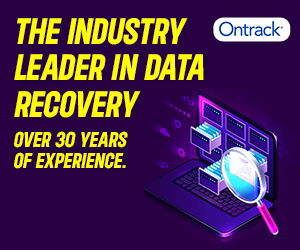For most of us, when we want to go somewhere, we get in our car and drive there. That may soon be about to change when the era of driverless cars becomes a reality.
Companies such as Google have spent many years developing cars that don’t need human drivers. Not only can they control the throttle, the brakes, and the steering, but they’re also equipped with a dazzling array of sensors and data links and astonishing software that makes sense of all that information. Not only are they aware of what traffic is around them, but they can distinguish between a pedestrian and a light pole, they have up to the second information on weather and traffic conditions, the condition of every part of the car, and, of course, a complete map of everywhere. Even more amazingly, autonomous cars can communicate with each other.
All you have to do is tell your car where you want to go, and it’ll get you there without you having to do anything.
That has several massive implications.
- Journey times will reduce. Driverless cars won’t necessarily go any faster, but once there are a lot of them on the road, their average speed will be noticeably higher. That’s because traffic is usually slowed down as a result of lots of people all acting independently trying to get ahead. If all the cars on the road worked together instead of jostling each other, they’d all travel more smoothly and would actually get there quicker. On long-distance journeys, the only time you’d need to stop would be for fuel – no need to take a nap when you get tired. In the event of an incident, cars will be able to automatically re-route and use alternative roads, instead of creating traffic jams. In theory, we could see journey times in urban areas reduced by up to 25%, even without changing existing speed limits.
- We won’t need as many roads. Driverless cars can travel closer together, because inter-vehicle communication enables the car behind to start braking as soon as – or even before – the car ahead starts to slow down. This in turn means that roads can handle more traffic per hour, and those congested roads are now flowing freely. Instead of building more roads, we’ll be able to make better use of the ones we’ve got. That money can be spent on maintenance, or go towards funding education or other construction projects.
- You won’t need as many cars. Most of the time, your car sits idle. However, you could make much more efficient use of a shared family car if it can return between journeys. One car could take me to work at 9am, go back home and take my wife to work at 11am, head back to my office to pick me up at 5pm, and then go back to pick her up at 7pm. And in the meantime, it’s available for my son to get into college.
- Fuel consumption will drop. Autonomous cars are much more fuel-efficient than human drivers. If we program them for maximum fuel efficiency, we could save over 25 billion gallons of gasoline each year in the US alone. That’s good for the household budget, as well as for the environment.
- The trucking industry will be hard hit. 60% of US freight goes by road. Nearly all of that could be transported without any need for a driver – just load the truck and send it on its way. And since driverless vehicles don’t need to sleep, they’ll get to their destination faster.
- More people will be able to use a car. It won’t matter if you’re old, handicapped, or blind. (Take a look at this video!) Even a child could get around in an autonomous car. People who are currently housebound because they can’t drive will have a new freedom. Their quality of life will be increased immeasurably.
But would you feel safe in a car driven by a computer? Or on roads where blind people are driving?
Well, the truth is that driverless cars have been proved to be safer than cars driven by humans. Google has had driverless cars on the streets for several years, in some of the worst traffic conditions imaginable – rush hour on I-4 in Orlando, for example. So far, they have completed over 300,000 miles in all weathers and road situations without a single accident while under autonomous control. The only times they’ve been involved in accidents have been when they’ve been under the control of their human driver, and once when rear-ended by another vehicle while stationary at a stop light. Very few human drivers can boast that kind of safety record.
That’s right – Google is a better driver than you! Autonomous cars have more data to go on, and they react faster than humans. They don’t get distracted, even for a split second, by texting while driving, talking to passengers, or gawping at billboards. They don’t get tired, drunk or stressed. They don’t get road rage. They don’t jump lights or speed. And every one of them has the driving skills of a race car driver. Although we all like to think of ourselves as good drivers, and most of us enjoy driving, we will eventually have to face up to the fact that if we want safer roads, we will have to let the machines do the driving.
Some states are mandating that driverless cars have to have the ability to allow the human to take control in the event of an emergency. Perhaps it should be the other way round – and allow the software to take over when it identifies an imminent crash?
The biggest problem for the manufacturers isn’t the technology. That already works. It’s liability. If your autonomous car has an accident, who’s to blame? You? Or the manufacturer? How will insurance companies and lawyers decide who’s at fault?
When the lawmakers figure that out, you’ll be able to sit back in your car and surf the Net or meditate while it takes you to work.






Self-driving vehicles will become essential technology in the next 15-20 years as the American population ages. With advancing age, reaction time, vision, and judgment often become impaired. Without a means to enable the elderly to take care of their own basic needs, including shopping for necessities, visiting health care providers and maintaining social networks, elders will be unable to stay in their own homes. There are not enough nursing home and assisted living beds available to care for the increasing numbers of aging baby boomers. Many communities have embraced schemes to encourage “aging in place”. Provision of transportation will be crucial to making these plans effective. For all our sakes, the legal problems associated with this technology must be resolved.
If this technology would make the first car in a line proceed when a traffic lights turns green (instead of everyone behind waiting for the driver in front to stop texting and look up), or toggle cars through 4-way stops (here in SF, nobody seems to know whose turn it is and everyone simply freezes), both would do much do improve traffic.